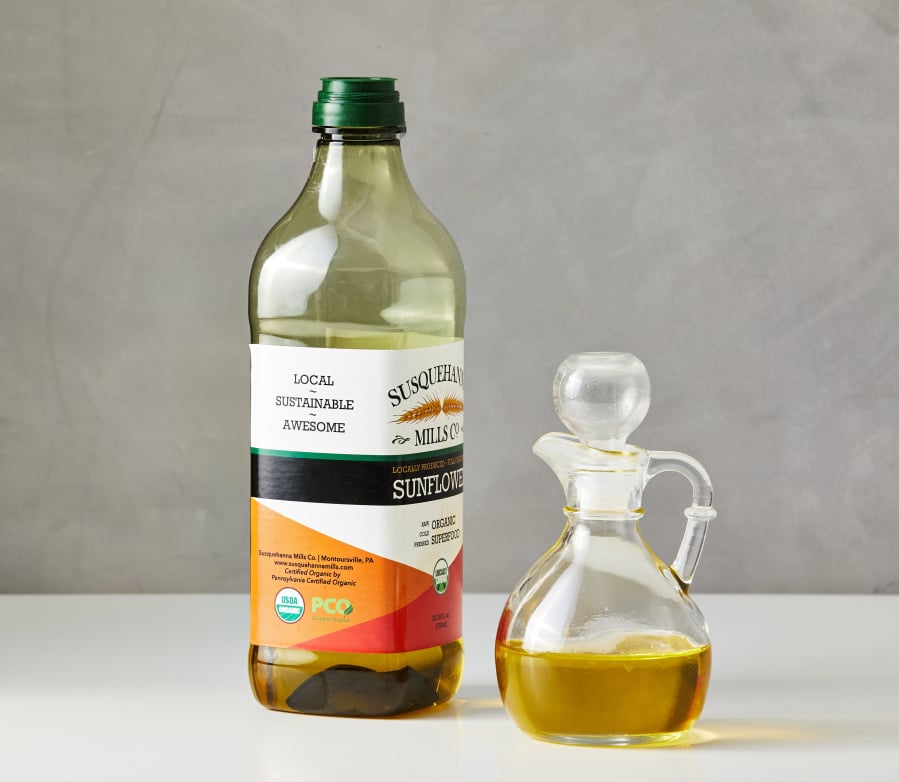As a recipe writer, I’ve asked you countless times to reach for canola “or another neutral oil.” But what if vegetable oil isn’t supposed to be flavorless after all? Most “neutral oil” got that way because it has been chemically refined, deodorized and otherwise processed in the name of granting it near-infinite shelf life.
“Big ag has decided oil should be flavorless, but that runs counter to the larger food movement,” says Joshua Leidhecker, owner of Susquehanna Mills, in Pennsdale, Pennsylvania, where he makes a very different type of vegetable oil. Something that’s anything but neutral.
It was Leidhecker’s unusual sunflower oil that first got me thinking about all this a few months ago. I was eating dinner at Cadence restaurant in Philadelphia, where my bread arrived beside a ramekin of what I figured was olive oil. My server informed me it was local, expeller-pressed sunflower oil. I may actually have rolled my eyes, wondering why some chefs just have to be so cute.
Then I dipped a torn hunk of bread into it, and repeated until the bread was gone. I considered tipping the remaining dram of oil directly into my mouth.



